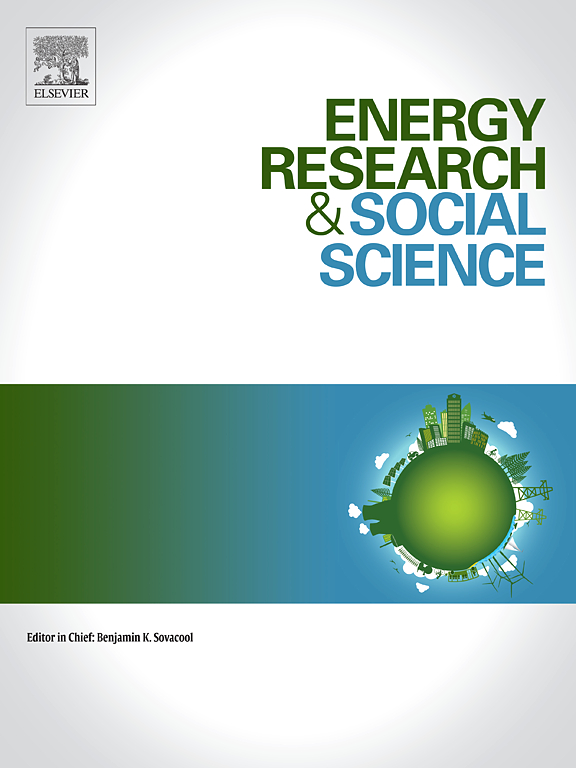How stakeholders legitimate ‘acceptable’ national energy transitions through spatial imaginaries and imagined publics: A Swedish case study
IF 6.9
2区 经济学
Q1 ENVIRONMENTAL STUDIES
引用次数: 0
Abstract
Low carbon energy transitions reconfigure geographies of energy generation, distribution, and consumption, and are often subject to contestation. Social acceptance research has neglected relations between socio-political and market acceptance, and the role of socio-spatial beliefs in legitimating technology deployment. This research addressed these gaps in two ways. First, we devised a novel methodology integrating participatory GIS in semi-structured interviews with government, energy industry and non-governmental stakeholders. Second, we investigated how socio-spatial resources - spatial imaginaries and imagined publics - are drawn upon by stakeholders to legitimate ‘acceptable’ current and future pathways of low carbon energy technology deployment, using Sweden as a case study. Thematic analysis revealed consensus between government and industry stakeholders in ‘othering’ two established, relational place imaginaries - ‘Northern Sweden’ and ‘Southern Sweden’. Established place imaginaries were legitimated through historic, economic, demographic and environmental characteristics, and associated with specific imagined publics (‘Northern People’, ‘Indigenous Sami’ and ‘Southern People’) with varying levels of ‘acceptance’. An emergent place imaginary (‘Mid-Sweden’) focused on contestation over high voltage power lines. These socio-spatial resources were invoked to legitimate where future hydrogen deployment and offshore wind should be placed. Findings make four contributions. First, we extend understanding of the inter-relations between socio-political and market dimensions of social acceptance. Second, we develop a novel approach to social acceptance integrating the concepts of place imaginaries and imagined publics as socio-spatial resources. Third, we show how these socio-spatial resources can be captured using mapping methodologies. Finally, we map a future critical-spatial social acceptance research agenda.
求助全文
约1分钟内获得全文
求助全文
来源期刊

Energy Research & Social Science
ENVIRONMENTAL STUDIES-
CiteScore
14.00
自引率
16.40%
发文量
441
审稿时长
55 days
期刊介绍:
Energy Research & Social Science (ERSS) is a peer-reviewed international journal that publishes original research and review articles examining the relationship between energy systems and society. ERSS covers a range of topics revolving around the intersection of energy technologies, fuels, and resources on one side and social processes and influences - including communities of energy users, people affected by energy production, social institutions, customs, traditions, behaviors, and policies - on the other. Put another way, ERSS investigates the social system surrounding energy technology and hardware. ERSS is relevant for energy practitioners, researchers interested in the social aspects of energy production or use, and policymakers.
Energy Research & Social Science (ERSS) provides an interdisciplinary forum to discuss how social and technical issues related to energy production and consumption interact. Energy production, distribution, and consumption all have both technical and human components, and the latter involves the human causes and consequences of energy-related activities and processes as well as social structures that shape how people interact with energy systems. Energy analysis, therefore, needs to look beyond the dimensions of technology and economics to include these social and human elements.
 求助内容:
求助内容: 应助结果提醒方式:
应助结果提醒方式:


